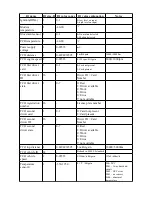
6.Set “Average” (averaging is used to ensure that IO value is long time result and not short impulse
value). Some parameters, which has static values (like iButton ID) ignores averaging.
7.Select “Event on”(Monitoring – no event generation, only include value to record; Hysteresis –
event generation defined by “Level” and “Delta”; Change – event generated when measured
property changes, that means its value is different from previous registered value).
8.Select whether to always include value to record or only when event is generated.
9.Select priority (Low – do not start GPRS session after event and send data according to timing
defined in parameters “Period” and “Timetable”(Fig. 2.3.1), High – start GPRS session after event
and send data if “Timetable” allows GPRS activity at that time).
10.Select whether to switch profile on this event or not.
Hysteresis principle is applied to reduce amount of events generated and thus reduce GPRS
traffic. For example, take configuration from Fig. 2.3.7: voltage on analog1 input (AIN1) will be
measured, event will be generated on hysteresis then signal on analog rises from 1000-100=900mV
to 1000+100=1100mV, or falls from 1100mV to 900mV, with a samples averaged within 1s
intervals; data will be included only when event is generated; and when event is generated GPRS
session will be initiated and device will switch to 3
rd
profile. To generate event on “Hysteresis”
property value must travel from Level-Delta to Level+Delta or vice versa. In Fig. 2.3.8 event will
be generated on 9
th
and 15
th
seconds.
Fig. 2.3.7 IO event settings view








































